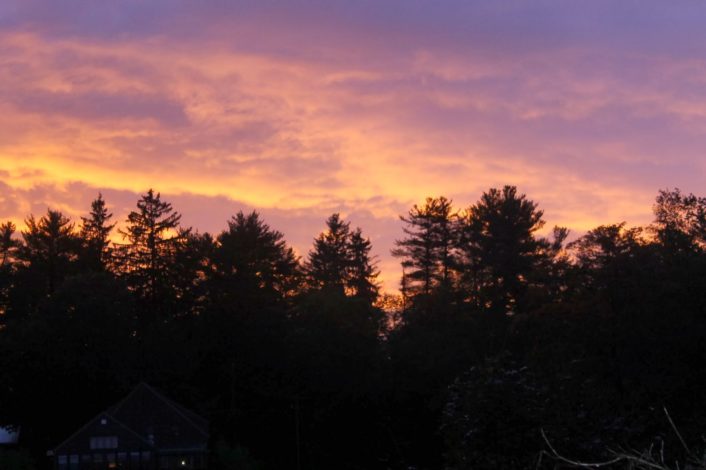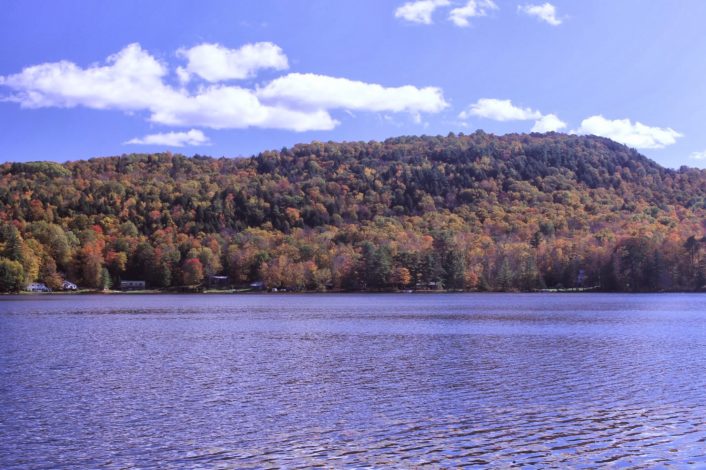15 Fun Things to do with Kids in Lake Tahoe in the Summer
The clear, crystal blue colors of Lake Tahoe’s waters beckon the call of outdoor enthusiasts nationwide. The nation’s second deepest lake, Lake Tahoe sits at the base of some of the most impressive mountain peaks the Sierra Nevadas has to offer. Lake Tahoe is one of California’s and Nevada’s most popular family vacation destinations with an abundance of outdoor family adventures, including camping, hiking, kayaking, bike riding, fishing, river rafting, paddleboarding, waterskiing and much more.
The sights, sounds and smells of Lake Tahoe make up a large portion of my childhood summer memories. As a California native, Lake Tahoe was my family’s primary vacation destination every July when my sisters and I would spend a week fishing for crawdads along the shores of Sand Harbor and eating ice cream runoff out of our sunburned belly buttons. As I grew into adulthood, Lake Tahoe became the place where I first learned to backpack, where I was married, and now, where my son first put his toes in the sand. If you are considering a trip to Lake Tahoe, here are some tips from a local.
Tips for visiting Lake Tahoe
Traveling by plane, the closest major airports are Reno or Sacramento. The AMTRAK California Zephyr Train makes daily stops in nearby Truckee and runs from San Francisco to Denver if you'd like a different experience. If you choose to drive, Lake Tahoe is, on average, 3.5 hours from the San Francisco Bay Area, 2 hours from Sacramento and 1 hour from Reno. And once you've made it to Lake Tahoe, there are many ways to get around the Lake by public transportation.
Lake Tahoe sits at an average elevation of 6,200 feet. In order to account for high-elevation conditions, precautions should be taken to avoid any risk of altitude sickness, including easing into any physical activity, using ample sun protection and staying hydrated. Sleeping at higher altitudes can be the best way to mitigate the change in elevation. The symptoms of altitude sickness include headaches, vomiting, dizziness and fatigue.
When packing your clothes, be sure to bring warm clothes for the evening as the mountains get cold quickly when the sun sets. Also, be sure to bring plenty of breathable UV-protective layers, strong sunscreen and/or a sunhat.
The traffic around the Lake Tahoe Basin can be painstakingly slow at times with lots of construction and, therefore, visiting during the week is strongly encouraged, if possible. There can be lines of cars stacked up prior to beaches’ open times on summer weekends.
There is a high concentration of black bears in the Tahoe Basin. Do not leave food in plain sight in your car when parked, and use proper bear receptacles in campgrounds and rental properties.
If you are planning a stay, be sure to reserve a campsite, cabin or hotel at least six months in advance.
15 Fun things to do with kids in Lake Tahoe in the summer
1. Visit Emerald Bay
With some of the best views of the Lake, Emerald Bay is a popular stop for vacationers. Park at the Eagle Falls Trailhead and you can choose to make the quick (but steep) 15-minute jaunt to the bridge overlooking Eagle Falls. Or if you are feeling even more adventurous (and in shape), continue walking to Eagle Lake and into Desolation Wilderness, the prime backpacking spot in the Tahoe area. You may also choose to park across the street at the Vikingsholm parking lot and hike down (another steep trail) to Emerald Bay Beach where there is shade, picnic tables and a restroom. Kayaks or paddleboards are available for rental and you can head out to Fannette Island, the Lake’s only island!
Photo courtesy of Joyce Thao.
2. Hike to Monkey Rock
Monkey Rock is a 2.6-mile out and back hike on Tahoe’s East Shore outside the town of Incline Village is named after the simian-like rock feature at its terminus and includes one of the best views of Lake Tahoe. There is no parking at the trailhead for this hike, so park next to the Tunnel Creek Cafe. The hike climbs 500 feet overall and can be done gradually or by taking a lung-busting shorter route to the summit.
Photo courtesy of Shari Charron.
3. Bike ride along the Truckee
If you aren’t rafting the Truckee, try riding a bike along its banks on the Historic Truckee River Path from Tahoe City to Squaw Valley. This easy ride is great for the entire family and can be done by renting bikes on either end. Rent a bike at Olympic Bike Shop in Tahoe City and ride south and enjoy lunch at River Ranch or north from Squaw Valley at Sqaw Bikes to Tahoe City and stop to watch the trout run under Fanny Bridge.
4. Truckee river rafting
You will not be facing any Class III rapids on this lazy ride down the Truckee River. Book a reservation with the two local river rafting companies in Tahoe City (Truckee River Rafting or Truckee River Raft Co.) and commandeer one of their large rafts with shuttle service or bring your own raft and float at your own risk! The ride down the Truckee River takes around 2-3 hours and requires that you pull out at River Ranch where you can sit on the deck and enjoy a plate of loaded nachos after your journey. Make sure to bring sun protection!
5. Echo Lakes
West of Echo Summit on US Route 50, Echo Lakes are the gateway to Desolation Wilderness. Hiking the shores of Upper and Lower Echo Lakes is a beautiful way to get there, but why not skip the 2.5 miles and take a boat taxi! The boat taxi runs from Memorial Day to Labor Day, barring any big snow years. If you have the time and the legs, try taking a boat taxi to the Lower Echo outlet and then hiking an extra 3 miles to Lake Aloha, one of Desolation Wilderness’ most iconic features.
Photo courtesy of Joe Linehan.
6. Hike to Eagle Rock
Located on Tahoe’s West Shore just off Hwy 89, the hike to Eagle Rock is a .7-mile moderately steep trail with a big payoff! The views from Eagle Rock span across the entire Lake. With its short distance, this hike is great if you are looking for a quick activity to kill some time.
Photo courtesy of Cindy Vue.
7. Treetop Adventure Park at Granlibakken
Treetop Adventure Park - Tahoe City is a self-guided ropes course located just outside of Tahoe City on the North Shore. This adventure park offers 97 platforms and 10 different courses varying in difficulty all within a secluded pine forest. There are two other Tahoe Treetop Adventure Park locations in Squaw Valley and Tahoe Vista. Safety gear is included with the $50 admission fee. For more information, go to Tahoe Treetop Adventure Parks. Picnic tables and hiking trails are available for those who do not wish to participate.
8. Fishing for crawdads
There are over 300 million crawdads in Lake Tahoe. That’s almost 1 for each U.S. citizen! So why not try your luck at one of my favorite childhood Tahoe pastimes. No need for a fishing pole here. To catch a crawdad, all you need is string, bacon/hot dog/chicken livers, and a bucket. Tie your bait onto the end of the string and throw it off your nearest dock or place it under any large submerged rock until you get a bite!
9. Kayaking and paddleboarding
Lake Tahoe’s clear and deep azure blue waters make stand-up paddle boarding and kayaking the perfect activity for the entire family. Numerous beachside rentals dot the entire Lake. Some of the best places to put in include Sand Harbor, Zephyr Cove, D.L. Bliss State Park, Emerald Bay and Cave Rock. Take note of the weather, especially the wind on the day you plan to embark, as the Lake can sometimes seem like an ocean in the afternoon.
Photo courtesy of Nick Her.
10. Hike Taylor Creek
Located 3 miles northwest of South Lake Tahoe, Taylor Creek provides four outstanding, easy nature trails for families with children. Walk the boardwalks over marshes with views of the nearby Mt. Tallac, listen to an educational talk by a ranger at the amphitheater, or look through the Stream Profile Window which provides an underwater window of Taylor Creek and its inhabitants. If you are visiting in the fall, salmon run the creek so keep a lookout for bears!
Photo courtesy of Steven Yang.
11. Hike Rubicon Trail / D.L. Bliss State Park
The Rubicon hiking trail (not to be confused with the ORV Rubicon track) is by in large one of my family’s favorite hikes around the Lake and for good reason. This trail connects two of the most beautiful state parks in the area: D.L. Bliss and Emerald Bay. The trail is 5 miles one-way and for that reason, it is my recommendation to start at D.L. Bliss and end at Emerald Bay so you can enjoy a swim, a popsicle at the visitor’s center, and relax on the beach when you are done.
This trail skirts above the shoreline with amazing views of the clear blue water along the way. There are a few sections where the trail hugs cliff lines but there are rails for your safety. Nonetheless, you will want to keep your kiddos close on these sections. If you do not want to shuttle cars, you can always hike up to the highway once at Emerald Bay and take the Emerald Bay Trolley back to D.L. Bliss.
Photo courtesy of Joe Linehan.
12. Go to the movies on the beach in Tahoe City
Enjoy a movie while sitting on the beach on the North Shore at Tahoe City’s Common’s Beach. Movies are family-friendly and a great way to spend the evening outside. There is a playground right next to the beach, too! Just remember to bring your warm clothes as it can get chilly at night! Come early for seats, food and prizes!
13. Take the Gondolas at Squaw Valley or Heavenly
Many of Tahoe’s winter ski resorts have summer activities as well. Two of which, Squaw Valley and Heavenly, make use of their gondolas to bring families higher into the mountains and give them access to some pristine hiking trails and mountainside retail and restaurants.The Heavenly Mountain Gondola is a 2.4-mile ride with panoramic views of Lake Tahoe. If you want to access a series of hiking trails, take the Tamarack Express chairlift. Squaw Valley’s Aerial Tram climbs over 2,000 feet to High Camp where you can dine and enjoy many different trails.
14. Visit Fallen Leaf Lake
Located just one mile south of Lake Tahoe, Fallen Leaf Lake is a hidden gem behind the shadow of Lake Tahoe. Fall Leaf Lake is a great location for camping, day hikes and access to Desolation Wilderness, and water activities like water skiing, sailing. kayaking, wakeboarding, rowing, stand-up paddleboarding and even pedal boating.
Photo courtesy of Shari Charron.
15. Go geocaching at Squaw Valley
What better place to do a real outdoor treasure hunt than in the Sierra Nevadas. For those interested in geocaching, take the Aerial Tram at Squaw Valley to the High Camp, download the Geocaching App, and look for 10 different caches hidden in the mountains. Each cache contains a prize and a log sheet for you to sign. The treasure hunting is free, but you will have to buy a $10 ticket to take the tram. Record each cache's box number and code on a “passport” from Guest Services at High Camp to receive discounts at the High Camp retail shop or other participating Squaw Valley stores. Trails to geocaches are rated moderate to above-moderate level.
Kid-Friendly Beaches
Lake Tahoe has over 70 miles of beaches, but for a list of those beaches which are kid-friendly, start with the five beaches below. Remember to get to these beaches EARLY as the parking lots fill up fast, especially on the weekends.
Sand Harbor (East Shore)
King’s Beach (North Shore)
Camp Richardson / Pope Beach (South Shore)
Meek’s Bay (West Shore)
Common’s Beach (North Shore)
Sand Harbor Beach. Photo courtesy of Nick Her.
Have you been to Lake Tahoe with your family and want to share some of your favorite kid-friendly activities? We'd love to hear them! Please share with us in the comments below.
Planning Resources
Lake Tahoe Basin Management Unit
Hike It Baby Family Trail Guide
Lake Tahoe Visitor’s Bureaus
Read more:
10 Fun things to do with kids in Yellowstone
15 Fun things to do with kids in Colorado Springs
10 Unforgettable things to do in Glacier National Park with kids
3 Unique hikes in California for kids of all ages
ABOUT OUTGROWN
OutGrown is a 501(c)(3) nonprofit that works to create a world where everyone can enjoy the physical and mental benefits of spending time outside. We are focused on creating opportunities and removing barriers to access so families with babies and young children can take their first steps outside. We believe all families have the right to connect with nature, benefit from spending time outdoors and be inspired to a lifelong love of nature. Since its grassroots inception in 2013, OutGrown is a growing community of 280,000 families and over 300 volunteer Branch Ambassadors. More information on all of our programs can be found at WeAreOutGrown.org
EDITORS NOTE:
We hope you enjoyed reading this article from OutGrown. We’re working hard to provide our community with content and resources that inform, inspire, and entertain you.
But content is not free. It’s built on the hard work and dedication of writers, editors, and volunteers. We make an investment in developing premium content to make it easier for families with young children to connect with nature and each other. We do not ask this lightly, but if you can, please make a contribution and help us extend our reach.
 A classic Adirondack sunset in the fall season.
A classic Adirondack sunset in the fall season.
 The northern end of Lake George is in the southeast section of the Adirdondack Park.
The northern end of Lake George is in the southeast section of the Adirdondack Park.
 ATTORNEY. ENGINEER. AUTHOR. CONSERVATIONIST.
ATTORNEY. ENGINEER. AUTHOR. CONSERVATIONIST. A classic Adirondack sunset in the fall season.
A classic Adirondack sunset in the fall season.
 The northern end of Lake George is in the southeast section of the Adirdondack Park.
The northern end of Lake George is in the southeast section of the Adirdondack Park.




Comments